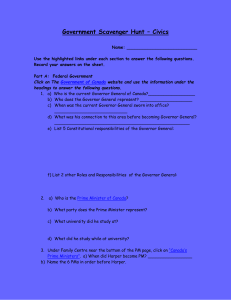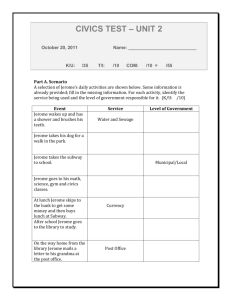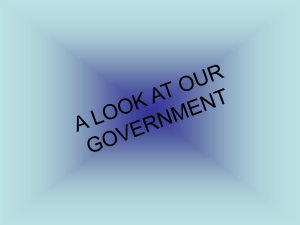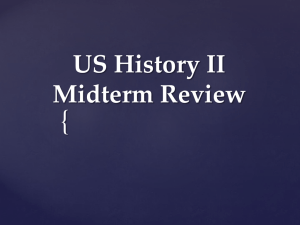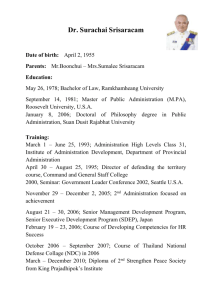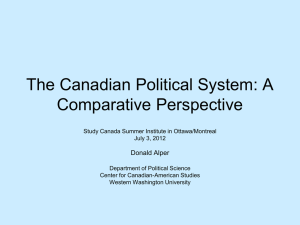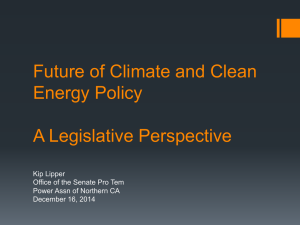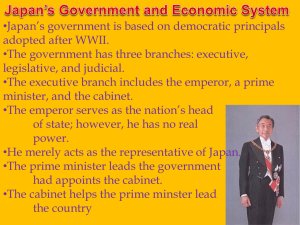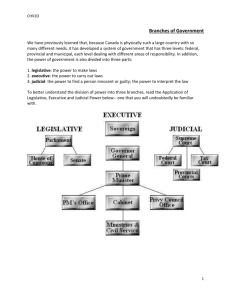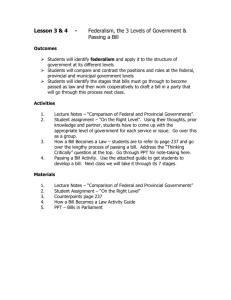Social Studies 11 - sabresocials.com
advertisement
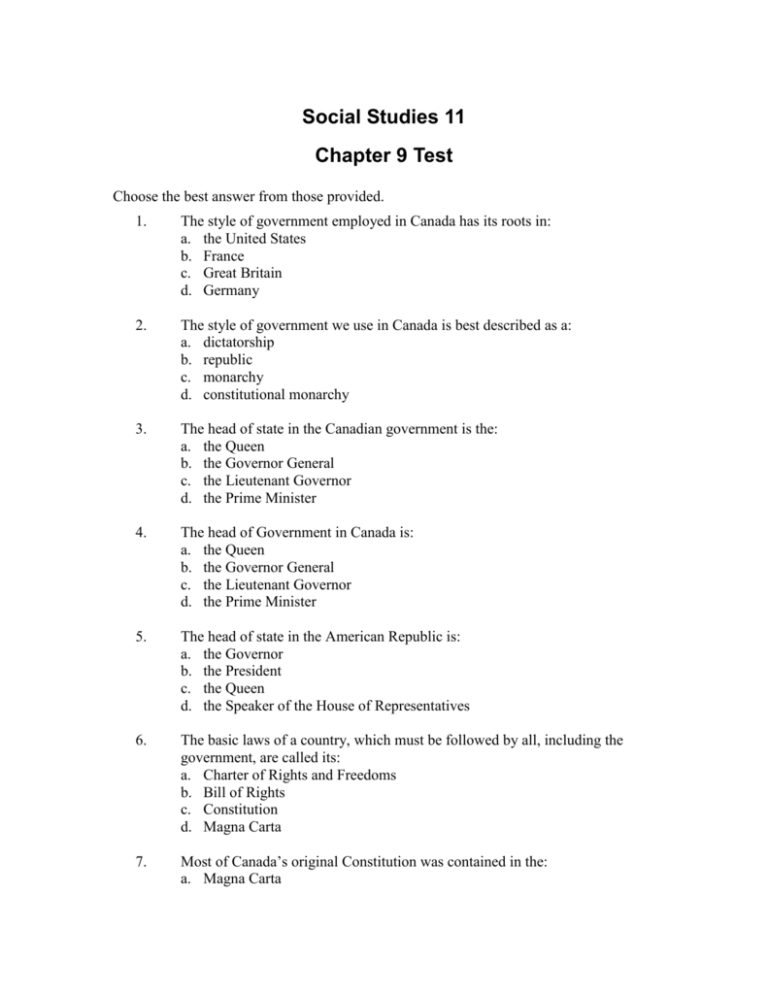
Social Studies 11 Chapter 9 Test Choose the best answer from those provided. 1. The style of government employed in Canada has its roots in: a. the United States b. France c. Great Britain d. Germany 2. The style of government we use in Canada is best described as a: a. dictatorship b. republic c. monarchy d. constitutional monarchy 3. The head of state in the Canadian government is the: a. the Queen b. the Governor General c. the Lieutenant Governor d. the Prime Minister 4. The head of Government in Canada is: a. the Queen b. the Governor General c. the Lieutenant Governor d. the Prime Minister 5. The head of state in the American Republic is: a. the Governor b. the President c. the Queen d. the Speaker of the House of Representatives 6. The basic laws of a country, which must be followed by all, including the government, are called its: a. Charter of Rights and Freedoms b. Bill of Rights c. Constitution d. Magna Carta 7. Most of Canada’s original Constitution was contained in the: a. Magna Carta b. Act of Union c. Declaration of Independence d. British North America Act (1867) 8. In Canada, there are _____________ level/s of government. a. one b. two c. three d. four 9. The term “division of powers” refers to: a. the responsibility for electrical production b. those issues over which each level of government has control c. those things the Prime Minister can do and those things that the Governor General should do d. the separation of the Armed Forces into the Army, the Navy and the Air Force 10. Every government has three functions, these are: a. federal, provincial and municipal b. army, navy and air force c. primary, secondary and tertiary d. legislative, executive and judicial 11. The legislative branch of the Federal government in Canada consists of: a. the National Assembly, the Lieutenant Governor and the House of Lords b. the mayor, the council and the provincial court c. the Governor General, the House of Commons, the Senate d. the Prime Minister, the Speaker of the House and the Privy Council 12. Because election to the House of Commons is based on Representation by Population, two province always elect the majority of the Members of Parliament, they are: a. Ontario and Alberta b. Ontario and British Columbia c. Ontario and New Brunswick d. Ontario and Quebec 13. The Provinces only have two parts to their legislative branch of government. Which component does each province not have? a. Lieutenant-Governor b. Legislative Assembly c. Senate 14. In Quebec the provincial legislature is called: a. Le Chambre du Deputies b. The Provincial Parliament c. Le front de liberation du Quebec d. The National Assembly 21. 15. If you are an MPP you are elected in the province of: a. Quebec b. Ontario c. New Brunswick d. Newfoundland 16. The head of a city council is called: a. the Reeve b. the Bailiff c. the Alderman d. the Mayor 17. Municipal governments get their authority from: a. the BNA Act (1867) b. provincial governments c. the Charter of Rights and Freedoms d. the federal government 18. Which level of government is responsible for education? a. the provincial b. the federal c. the municipal d. aboriginal 19. How many readings must a bill pass in the House of Commons before it can be sent to the Senate? a. one b. two c. three d. four 20. A meeting of the elected members of the House of Commons belonging to the same political party is called: a. a forum b. a caucus c. a session d. a sitting In a single paragraph outline what you believe should be done with the Canadian Senate and why? (10 marks – five for composition – five for content)
